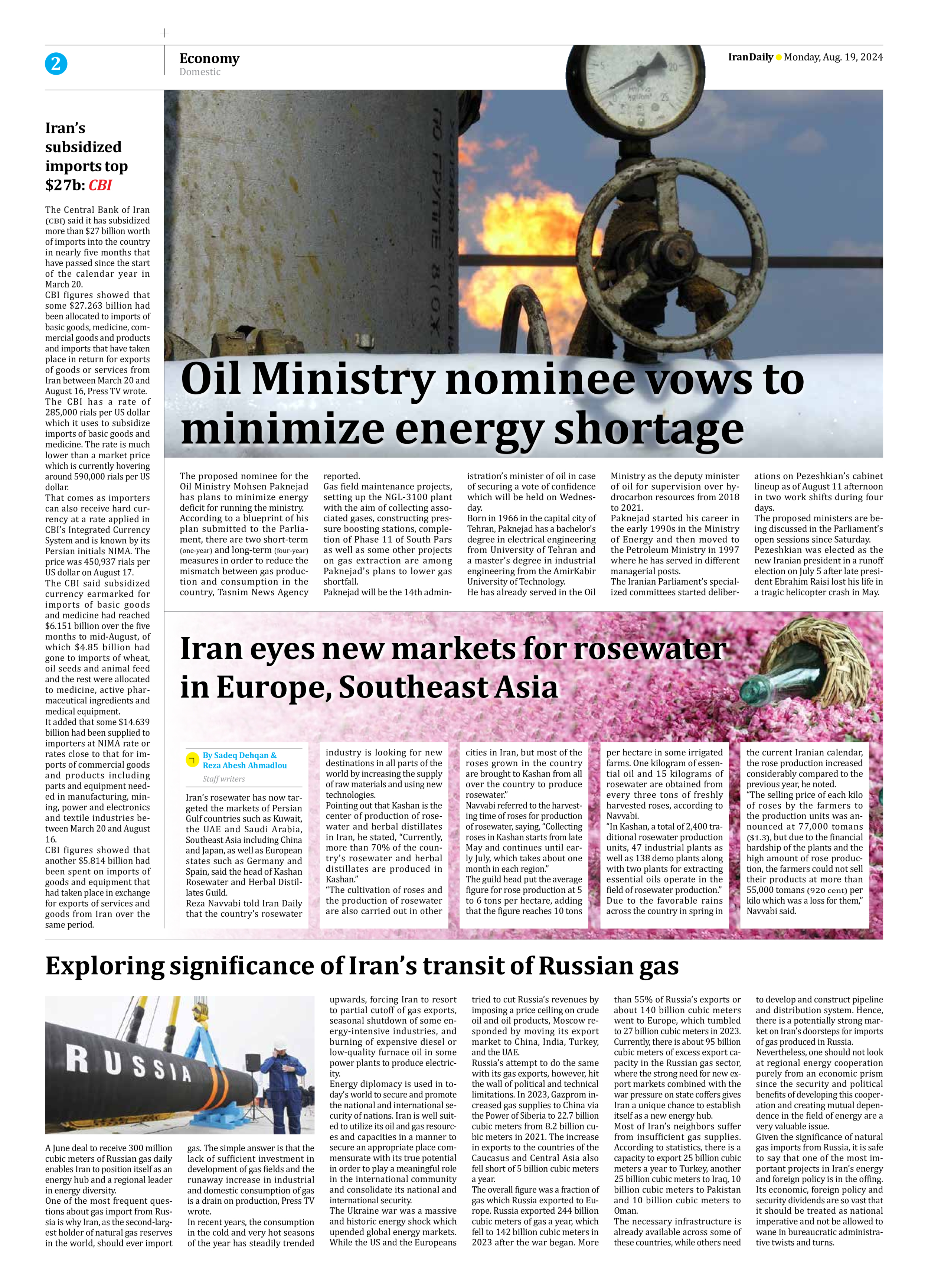
Copy in clipboard...
Iran eyes new markets for rosewater in Europe, Southeast Asia
Reza Navvabi told Iran Daily that the country’s rosewater industry is looking for new destinations in all parts of the world by increasing the supply of raw materials and using new technologies.
Pointing out that Kashan is the center of production of rosewater and herbal distillates in Iran, he stated, “Currently, more than 70% of the country’s rosewater and herbal distillates are produced in Kashan.”
“The cultivation of roses and the production of rosewater are also carried out in other cities in Iran, but most of the roses grown in the country are brought to Kashan from all over the country to produce rosewater.”
Navvabi referred to the harvesting time of roses for production of rosewater, saying, “Collecting roses in Kashan starts from late May and continues until early July, which takes about one month in each region.”
The guild head put the average figure for rose production at 5 to 6 tons per hectare, adding that the figure reaches 10 tons per hectare in some irrigated farms. One kilogram of essential oil and 15 kilograms of rosewater are obtained from every three tons of freshly harvested roses, according to Navvabi.
“In Kashan, a total of 2,400 traditional rosewater production units, 47 industrial plants as well as 138 demo plants along with two plants for extracting essential oils operate in the field of rosewater production.”
Due to the favorable rains across the country in spring in the current Iranian calendar, the rose production increased considerably compared to the previous year, he noted.
“The selling price of each kilo of roses by the farmers to the production units was announced at 77,000 tomans ($1.3), but due to the financial hardship of the plants and the high amount of rose production, the farmers could not sell their products at more than 55,000 tomans (920 cent) per kilo which was a loss for them,” Navvabi said.







